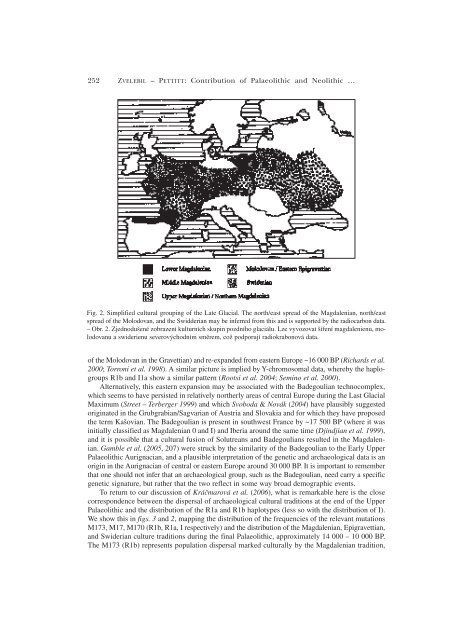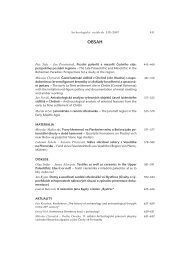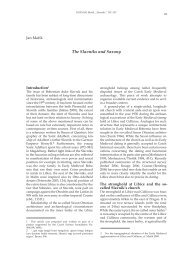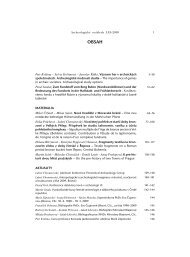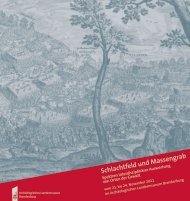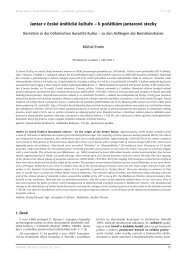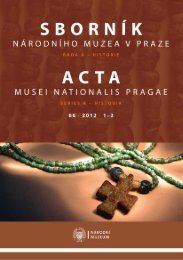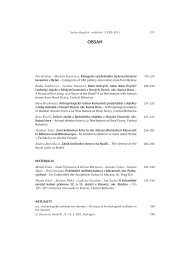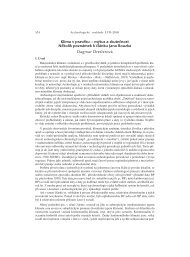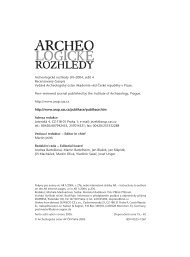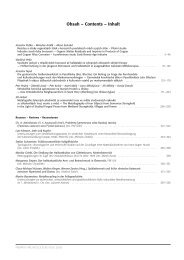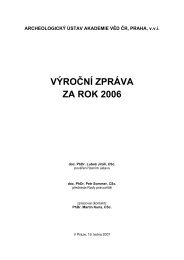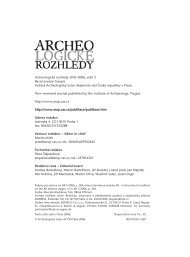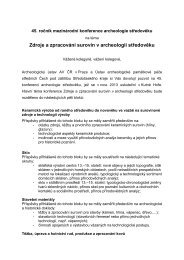Archeologické rozhledy 2006 - Archeologický ústav AV ČR
Archeologické rozhledy 2006 - Archeologický ústav AV ČR
Archeologické rozhledy 2006 - Archeologický ústav AV ČR
Create successful ePaper yourself
Turn your PDF publications into a flip-book with our unique Google optimized e-Paper software.
252ZVELEBIL – PETTITT: Contribution of Palaeolithic and Neolithic …Fig. 2. Simplified cultural grouping of the Late Glacial. The north/east spread of the Magdalenian, north/eastspread of the Molodovan, and the Swidderian may be inferred from this and is supported by the radiocarbon data.– Obr. 2. Zjednodušené zobrazení kulturních skupin pozdního glaciálu. Lze vyvozovat šíření magdalenienu, molodovanua swiderienu severovýchodním směrem, což podporují radiokrabonová data.of the Molodovan in the Gravettian) and re-expanded from eastern Europe ~16 000 BP (Richards et al.2000; Torroni et al. 1998). A similar picture is implied by Y-chromosomal data, whereby the haplogroupsR1b and I1a show a similar pattern (Rootsi et al. 2004; Semino et al. 2000).Alternatively, this eastern expansion may be associated with the Badegoulian technocomplex,which seems to have persisted in relatively northerly areas of central Europe during the Last GlacialMaximum (Street – Terberger 1999) and which Svoboda & Novák (2004) have plausibly suggestedoriginated in the Grubgrabian/Sagvarian of Austria and Slovakia and for which they have proposedthe term Kašovian. The Badegoulian is present in southwest France by ~17 500 BP (where it wasinitially classified as Magdalenian 0 and I) and Iberia around the same time (Djindjian et al. 1999),and it is possible that a cultural fusion of Solutreans and Badegoulians resulted in the Magdalenian.Gamble et al. (2005, 207) were struck by the similarity of the Badegoulian to the Early UpperPalaeolithic Aurignacian, and a plausible interpretation of the genetic and archaeological data is anorigin in the Aurignacian of central or eastern Europe around 30 000 BP. It is important to rememberthat one should not infer that an archaeological group, such as the Badegoulian, need carry a specificgenetic signature, but rather that the two reflect in some way broad demographic events.To return to our discussion of Kráčmarová et al. (<strong>2006</strong>), what is remarkable here is the closecorrespondence between the dispersal of archaeological cultural traditions at the end of the UpperPalaeolithic and the distribution of the R1a and R1b haplotypes (less so with the distribution of I).We show this in figs. 3 and 2, mapping the distribution of the frequencies of the relevant mutationsM173, M17, M170 (R1b, R1a, I respectively) and the distribution of the Magdalenian, Epigravettian,and Swiderian culture traditions during the final Palaeolithic, approximately 14 000 – 10 000 BP.The M173 (R1b) represents population dispersal marked culturally by the Magdalenian tradition,


